Historical Architecture of Grosse Pointe – the Punch and Judy Theater, Grosse Pointe Farms.
After covering several projects by architect Robert O. Derrick – lets take a look at another of his prominent creations – the Punch and Judy Theater.
Residential architect and designer of the Henry Ford Museum Robert O. Derrick was becoming a prominent architect in Grosse Pointe, having designed the ‘Little Club” (1923) and “Bellmoor”, 15420 Windmill Pointe (1927) along with several other residences including:
- 211 Vendome
- 70 Vendome
- Edwin H. Brown House
- Ledyard Mitchell House
- Grosse Pointe Farms Water Filtration and Pumping Station
In 1929 the Columbia University educated architect and Grosse Pointe resident was commissioned to design the Punch and Judy Theater in Grosse Pointe Farms.
Movies theaters during that era were going through a transition – from silent to sound motion pictures. During this transformation, in the winter of 1930, the Punch and Judy Theater opened on Kercheval.

Grosse Pointe already had a popular movie theater (The Grosse Pointe Park Theater, just inside the GP border on Charlevoix, which had began operating as early as 1923), however the opening of the new theater prompted a lot of public interest, including an article from the Detroit news, published three days before the theater opened:
A few glances are all that are necessary to realize that the Punch and Judy was designed with a homelike comfort as its chief attribute. There is nothing of the elaborate appeal of the standard movie house in its Early American outline. It is more a place to feel at home amid dignified and subdued coloring, modest lighting effects and seating arrangements in harmony with the quiet atmosphere.
Derrick selected his favored Colonial Georgian style for the new building, which gave it the look of a Virginia country manor rather than a traditional movie house. The exterior was brick; it had a high roof and shutters covered the windows. Inside the walls were plain, the lounge featured wood paneling (with gold borders), and pegged flooring while spacious fireplaces emphasized the architectural style. Outside an inconspicuous sign was suspended over the main entranceway displaying the sign of the new movie house.
At the time it opened the theater was one-tenth the size of larger theaters. There were 504 seats on the main floor and 96 on the balcony (the smoking “loge”) – which was the only legal smoking section in a movie theater in the State of Michigan – thus resulting in a higher ticket price than the seats on the main floor.
The article from the Detroit News described the care and detail the theater’s builders had gone to in order to insure superior sound production:
Acoustical experts of the University of Michigan supervised the insulation of walls and arrangement of the projection and speaking apparatus. A layer of felt in the ceiling and the use of special materials assure the efficiency of the talkie equipment, which is the most modern to be had.
When the theater opened the Punch and Judy was equipped with an organ along with both Vitaphone and Movietone sound apparatus. Later that year the Vitaphone system was removed when nationwide standardization of sound equipment adopted the use of optical soundtracks.
The projection booth in the theater had two carbon arc projectors, at least one spotlight and a smaller projector for displaying lyrics on the screen during sing-alongs.
The theater proved to be a popular place for matinees and became a leader in the area or matinees specially designed for children, which began in February 1930 and would continue until 1981. From 1930 until shortly before 1936 films were changed twice a week, with three performances daily, at 2:30, 7:30 and 9:00 pm. Ticket prices ranged from 25¢ for children (at all times), 50¢ for adults for matinees, 75¢ for evening shows and $1.00 at all times for the reserved seats in the smoking “loge”.
During the 1940’s and 50’s the theater had many upgrades to its sound and projection equipment in order to keep up to date with the change in movie production – magnetic soundtracks, 70mm film, 3D and widescreen movies along with Cinemascope film. In 1955 ‘A Man Called Peter’ became the first Cinemascope film to be screened at the theater.
Through its history the building itself received very few alterations. The biggest change came in the 1940’s when a marquee was added and the original square lobby was changed to a rounded shape. In the 1960’s the marquee was lowered and a new awning added. The front doors were also replaced; the wood paneling that had surrounded them was covered in brick in 1962. In 1969 red draperies were installed, the lobbies were re-carpeted and the red seats recovered.
In 1973 the theater installed its first concession stand and an arcade was installed in the lobby during the late 70’s (this was removed in 1981). In 1977 the theater had new owners but sadly they soon closed the theater due to huge financial loses. Several attempts were made to reinvent the theater but all rebuffed by the City in some way.
In 1981, under a new owner, the Classic Film Theater took over operations at the theater, and opened with the film ‘Casablanca’. However time had begun to take its toll on the building, in 1984 some of the main floor seats had to be removed, the auditorium was in need of painting, the upstairs lounge was being used as a store room and the balcony was closed due to the partial collapse of the ceiling above it. The theater closed for good on September 16, 1984. In 1986 it was gutted and converted into offices.
Today the exterior of the building still retains its original charm, and residents of Grosse Pointe who have lived in the community for years, fondly remember some of the wonderful films they watched at the Punch and Judy Theater.
Written by Katie Doelle
Copyright © 2015 Katie Doelle


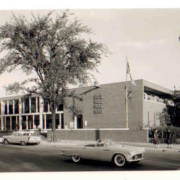
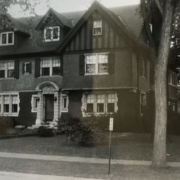
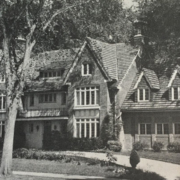
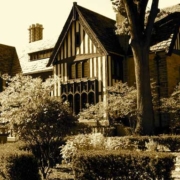

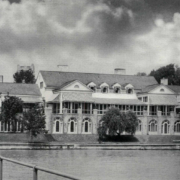

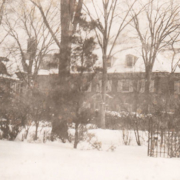
Leave a Reply
Want to join the discussion?Feel free to contribute!